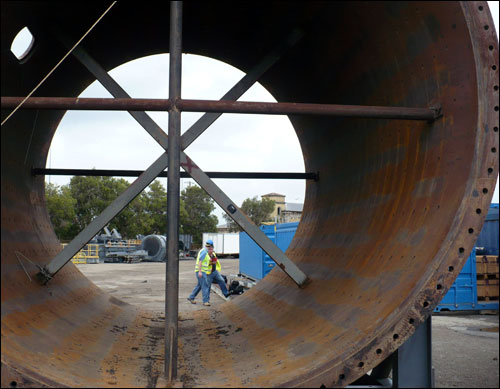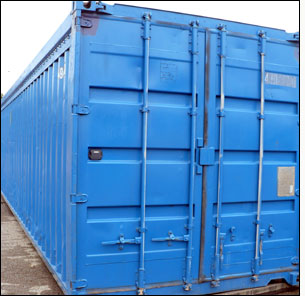Mar 09, 2010Freight and logistics firm Townley Group International has employed radio frequency identification to track the components of an entire gold-processing plant, as it was transported from Australia to Argentina. Troy Resources, a gold producer based in Perth, commissioned Townley Group to transfer the gold factory from its original location in Cobar, New South Wales, to a new site located near San Juan, Argentina.
The transfer, which took 18 weeks, included inventorying 1,000 parts (of which 790 were then loaded into 40-foot cargo containers) and transporting them by land to Newcastle, 676 kilometers (420 miles) to the east, where they were loaded onto a ship, followed by a journey by sea to Zarate, in Argentina, and by rail and truck through Argentina's Cordillera De Lipez mountain range, to the Casposo mining site, located approximately 150 kilometers (93 miles) west of San Juan. The components left Australia in November 2009 and arrived at their new destination on Dec. 20, after traveling a total of 12,000 kilometers (7,456 miles).
Peter Townley, Townley Group's managing director, says Wavetrend tags were attached to 40 cargo containers and 110 sections of mill that were too large to fit in a container. A total of 7,900 tonnes (8,690 short tons) of cargo were transported, with the largest piece, the mill shell, weighing 65 tonnes (70 short tons).
"This was critical, as there were so many parts to the plant," Townley says. "Cargo containers were tracked from loading to delivery on to the vessel, and the vessel was monitored throughout its journey. On arrival in Argentina, the cargo was again logged via the scanning system and dispatched to San Juan, some 1,200 kilometers [746 miles] away. This gave our client a clear view of the cargo in transit, and we trialed the technology, as we see it as the way of the future for all cargo shipments."
Townley adds, "There were many challenges, as the cargo was not your traditional cargo."
Warren Scott, Wavetrend's product marketing manager, says his company was approached in October 2009, with deployment expected the following month.
"Due to the short timescale involved, we offered Townley Group a solution that was largely ready for implementation, with all the required hardware at hand and the capability to address changes," Scott explains. "Some adjustments were required to accommodate Townley Group's specific data-capture and recording requirements, with design, implementation and testing completed in-house in early November. Final approval testing occurred the week prior to system deployment."
Wavetrend L-TG800-IH Industrial Asset tags were attached to assets in Cobar before the cargo was transported to Newcastle, with one tag per large item of equipment or shipping container carrying smaller equipment and parts.

The tags emit a 433 MHz signal, using a proprietary Wavetrend protocol to transmit their tag ID numbers and status information to the readers. Optimized to ensure low power usage and long battery life, the tags have a life span of more than five years, the company reports, and transmit data every 1.5 seconds.
"Data transmitted from the tags, including their unique ID number and battery status, is detected by the reader at up to 75 meters [246 feet] and reported to the AssetTrace Mobile application on the Workabout Pro G2 handheld computers," Scott states. "Each AssetTrace Mobile reader is uniquely identified within the AssetTrace platform, and links its own reader ID, a GPS coordinate, time and date stamp, and received signal strength value to the data packet. This full tag and reader data packet is then transmitted to the main platform, hosted by Townley Group servers, via GPRS and the Internet."
All tagged assets are read by staff members at Cobar, at the point of loading in the Newcastle port, at the unloading point at San Juan and again at the Caposa mining site, to allow the shipment manifest to be verified prior to dispatch. The assets are then read once more upon arrival at the destination port.
Townley Group plans to use Wavetrend's technology for a number of future projects. According to the logistics company, traditional container-tracking technologies, such as bar-coding, are no longer suitable for meeting customers' needs. Townley says it is important that clients know where their containers are at all times, regardless of the distances involved and the remoteness of the location.
"Customers want more precise information and a more realistic time capture of their cargo, as opposed to traditional methods, such as bar-code tracking," Townley says. "We wanted to be able to take a step clear of the pack, and take the leap to new technology that would give clients a real-time answer."
For future shipments, Scott says, Townley Group will also employ GlobalEyes Asset Monitoring Units (AMU), which will be integrated with each Workabout Pro G2 to improve traceability and security. "GlobalEyes AMUs are also equipped with a variety of sensors," he states, "such as light, acoustic, tamper, door status and temperature sensors, together with GPS."
The AMUs can communicate with each other using the ZigBee protocol, to ensure that any AMUs in locations onboard a ship that obscure GPRS or satellite communications can relay data to those in a better location within the vessel. All AMUs can communicate to the main system using any available WLAN network, GPRS or satellite communications methods. They also transmit immediate alerts regarding any status change beyond acceptable limits, such as excessive shocks and acoustics, unexpected route diversions or potential security problems, such as unexpected door openings or tampering.
Additionally, Townley Group plans to use the technology to monitor the progress of all future shipments through the Web-based GlobalEyes Information Management Bureau (IMB), integrated with data held on the AssetTrace platform.
Townley says his company's initial investment has already been paid back, and that the firm intends to run other jobs with clients in Papau New Guinea and Africa later this year. "We will also be looking into any other applications for cargo-transport identification that Wavetrend can develop," he says.


